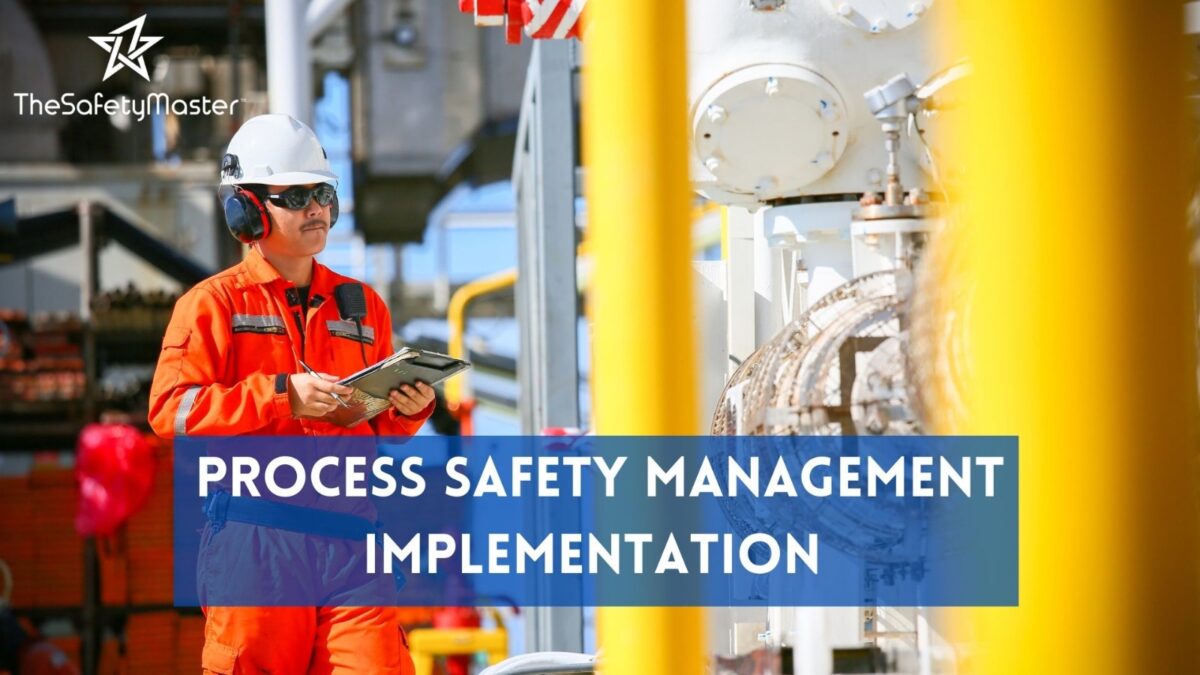Process Safety: Dust and Electrostatic Testing Services

The Safety Master’s Guide to BIS 14489 Safety Audit
June 5, 2024
Innovative Tech for Construction Site Safety Audits & Tips
June 17, 2024In industrial environments, the management of dust and electrostatic discharge (ESD) is crucial for ensuring process safety. Dust and ESD can pose significant hazards, including fires, explosions, and damage to sensitive equipment. Effective management of these risks requires thorough testing and analysis to identify potential issues and implement appropriate controls. The Safety Master offers comprehensive dust and electrostatic testing services designed to help organizations maintain a safe and compliant workplace. This blog will delve into the importance of these services, the testing process, and best practices for managing dust and ESD hazards.
The Importance of Dust and Electrostatic Testing
Dust and electrostatic discharge are often overlooked hazards in many industrial settings. However, their potential to cause catastrophic incidents makes them critical aspects of process safety. Here are some reasons why dust and ESD testing are essential:
- Explosion Risks: Combustible dust can accumulate and, when dispersed in the air, can create explosive atmospheres. Ignition sources, such as sparks from ESD, can trigger these explosions.
- Fire Hazards: Dust accumulation can contribute to fire hazards, especially when it settles on hot surfaces or electrical components.
- Equipment Damage: ESD can cause significant damage to sensitive electronic equipment, leading to costly repairs and downtime.
- Regulatory Compliance: Many industries are subject to regulations and standards that mandate dust and ESD management, such as OSHA’s Combustible Dust National Emphasis Program and NFPA standards.
- Worker Safety: Ensuring a safe working environment protects employees from the risks associated with dust explosions and ESD.
Dust Testing Services
The Safety Master’s dust testing services are designed to identify and mitigate the risks associated with combustible dust. These services include:
- Dust Hazard Analysis (DHA): A comprehensive assessment of the potential hazards posed by combustible dust in your facility. This includes evaluating the types of dust present, their properties, and the conditions under which they may become hazardous.
- Dust Characterization: Testing to determine the physical and chemical properties of dust, such as particle size, moisture content, and combustibility.
- Explosion Severity Testing: Determining the explosibility parameters of dust, including the minimum explosible concentration (MEC), maximum explosion pressure (Pmax), and the rate of pressure rise (Kst).
- Ignition Sensitivity Testing: Assessing the sensitivity of dust to ignition sources, including minimum ignition energy (MIE), minimum ignition temperature (MIT), and auto-ignition temperature (AIT).
- Housekeeping and Dust Control Assessments: Evaluating the effectiveness of current dust control measures and housekeeping practices to prevent dust accumulation and dispersion.
Electrostatic Testing Services
Electrostatic discharge can pose serious risks in environments where flammable materials or sensitive electronic equipment are present. The Safety Master’s electrostatic testing services help organizations identify and mitigate these risks through:
- Static Electricity Hazard Analysis: A detailed assessment of static electricity hazards in your facility, including identifying sources of static generation and evaluating the potential for ESD incidents.
- Electrostatic Discharge Sensitivity Testing: Testing materials and equipment to determine their sensitivity to ESD and identify safe handling and processing procedures.
- Static Dissipative and Conductive Material Testing: Evaluating the effectiveness of materials designed to dissipate or conduct static electricity, ensuring they meet industry standards.
- Grounding and Bonding Assessments: Assessing the adequacy of grounding and bonding practices to prevent the accumulation of static charges and ensure safe discharge.
- Personnel Training: Providing training for employees on ESD awareness, safe handling practices, and the use of personal protective equipment (PPE) to prevent static-related incidents.
The Testing Process
The Safety Master follows a systematic approach to dust and electrostatic testing to ensure comprehensive and reliable results. The typical testing process includes:
- Initial Consultation: Understanding the specific needs and challenges of your facility through discussions with key personnel and reviewing existing safety documentation.
- Site Assessment: Conducting a thorough site assessment to identify areas where dust and static electricity may pose risks. This includes evaluating equipment, processes, and environmental conditions.
- Sample Collection: Collecting samples of dust and materials for laboratory analysis. Samples are taken from various locations within the facility to ensure representative results.
- Laboratory Testing: Performing a series of tests on collected samples to determine their properties and behavior under different conditions. This includes combustibility tests, ignition sensitivity tests, and electrostatic discharge tests.
- Data Analysis: Analyzing test results to identify potential hazards and assess the severity of risks. This includes comparing results against industry standards and regulations.
- Reporting: Providing a detailed report of findings, including identified hazards, test results, and recommended control measures. The report also includes an action plan for mitigating risks and improving safety.
- Implementation Support: Assisting with the implementation of recommended control measures, including equipment upgrades, process modifications, and employee training.
- Follow-Up: Conducting follow-up assessments to ensure that implemented measures are effective and that safety improvements are maintained over time.
Best Practices for Managing Dust and Electrostatic Hazards
Effective management of dust and electrostatic hazards requires a combination of engineering controls, administrative measures, and employee training. Here are some best practices to consider:
- Engineering Controls:
- Install dust collection systems to capture and contain dust at the source.
- Use static dissipative and conductive materials for equipment and surfaces.
- Implement proper grounding and bonding practices to prevent static charge accumulation.
- Ensure adequate ventilation to prevent dust dispersion and accumulation.
- Administrative Measures:
- Develop and enforce housekeeping procedures to minimize dust buildup.
- Regularly inspect and maintain dust control and ESD mitigation equipment.
- Establish procedures for safe handling and processing of combustible dust and static-sensitive materials.
- Conduct regular safety audits and risk assessments to identify and address potential hazards.
- Employee Training:
- Provide training on the hazards of combustible dust and static electricity.
- Educate employees on safe work practices and the proper use of PPE.
- Conduct drills and exercises to ensure employees are prepared to respond to dust and ESD incidents.
Conclusion
Dust and electrostatic discharge are critical safety concerns in many industrial settings. The Safety Master’s dust and electrostatic testing services provide comprehensive solutions to identify, assess, and mitigate these risks, ensuring a safe and compliant workplace. By following best practices and implementing effective control measures, organizations can protect their employees, equipment, and operations from the potentially catastrophic consequences of dust explosions and ESD incidents. For more information on The Safety Master’s services or to schedule a consultation, visit their website or contact their team of experts today.
4o




